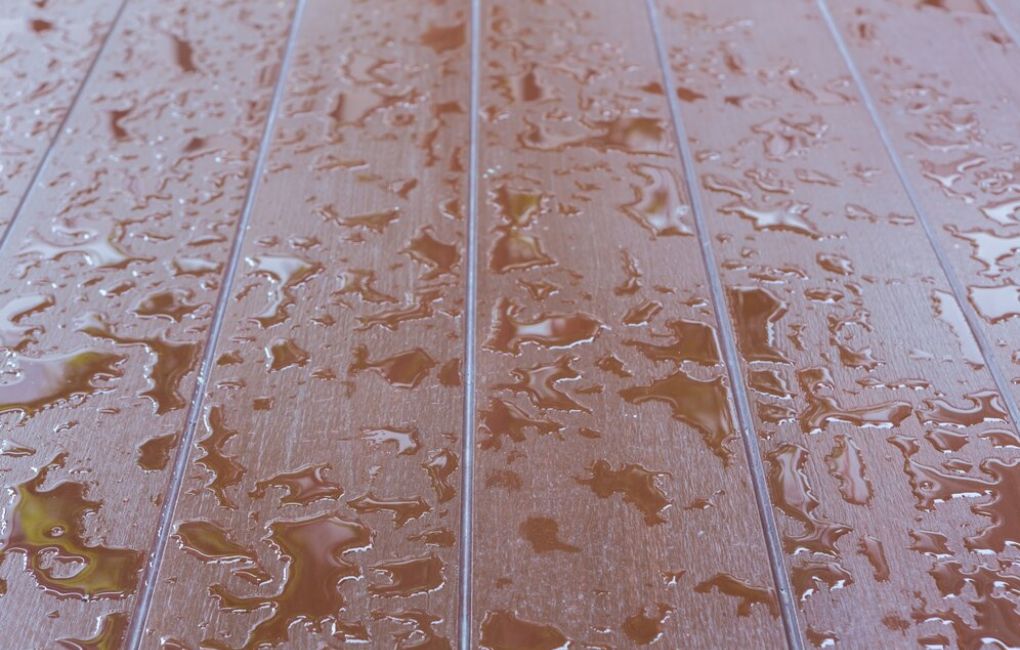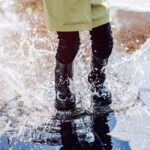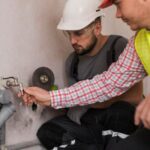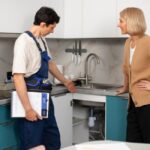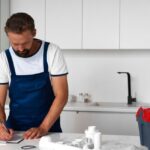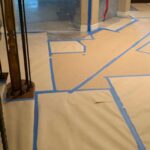Vinyl flooring is a popular choice for its durability, affordability, and style. But even the most resilient floor isn’t invincible to water. Water damage under vinyl flooring can be a sneaky and costly problem, leading to warped planks, mold growth, and even structural damage.
Water damage under vinyl flooring can lead to structural issues, mold growth, and compromised indoor air quality. Recognizing the signs of water damage and taking prompt action is crucial to prevent further damage and ensure a safe living environment.
How Water Infiltrates Vinyl Flooring?
While some vinyl flooring boasts waterproof claims, it’s crucial to understand that these claims often refer to surface spills, not prolonged exposure or seepage from below. Water can find its way under vinyl flooring through various avenues:
Leaking appliances
Appliances like washing machines, dishwashers, and refrigerators are prone to developing leaks, which can result in water seeping under the flooring. These leaks often go unnoticed until significant damage has occurred, compromising the integrity of the flooring material and potentially leading to mold growth and structural issues. Regular inspection and maintenance of appliances can help detect and address leaks early, preventing extensive damage to the flooring and surrounding areas.
Plumbing issues
Cracked pipes, faulty connections, or even condensation can lead to water seeping under your vinyl planks. This moisture infiltration can compromise the integrity of the flooring, causing warping, swelling, or mold growth if left unaddressed.
Flooding
Heavy rain, overflowing basements, or burst pipes can result in substantial water intrusion, saturating the subfloor beneath your vinyl flooring. This excess moisture can lead to warping, buckling, or mold growth in the subfloor and compromise the stability of your flooring system.
Improper installation
Gaps around the perimeter or an insufficient moisture barrier can serve as entry points for water, potentially causing damage to your flooring. These openings allow moisture to seep beneath the surface, leading to issues like warping, buckling, or mold growth. Properly sealing gaps and ensuring the installation of an effective moisture barrier are essential steps in preventing water intrusion and maintaining the longevity of your flooring.
Identifying Water Damage Under Vinyl Flooring
Unlike other flooring materials, vinyl’s smooth surface can mask the early signs of water damage. However, keen observation can reveal the telltale clues:
Visual Cues
Be vigilant for signs of water damage such as warping, buckling, or lifting of the vinyl planks, which indicate moisture infiltration. Additionally, watch out for discoloration, staining, or bubbling along the seams, as these are red flags signaling potential water damage. Addressing these issues promptly can help prevent further damage to your flooring and underlying subfloor, preserving the integrity and appearance of your space.
Tactile Sensations
When inspecting for water damage under vinyl flooring, be sure to feel for soft spots, as they indicate weakened subfloor material. These soft areas suggest moisture infiltration, which can compromise the structural integrity of the subfloor and the flooring above it. Addressing these soft spots promptly is crucial to prevent further damage and maintain the stability of your flooring system.
Olfactory Offenses
A musty or mildew-like odor is a strong indicator of mold growth, which tends to thrive in damp environments such as those created by water damage. If you detect this odor, it’s essential to investigate the source of moisture and address any underlying issues promptly. Ignoring the presence of mold can lead to further damage to your property and potential health risks for occupants. Therefore, it’s crucial to take action to remediate the mold and prevent its recurrence.
Sounding the Alarm
Listen for squeaking or crunching sounds when walking on the affected area, as these noises can indicate moisture damage to the subfloor. Such sounds may result from the weakening of the subfloor material due to water infiltration, compromising its structural integrity. If you hear these noises, it’s important to investigate the underlying cause of the moisture and address any water damage promptly to prevent further deterioration. Ignoring these warning signs can lead to more extensive damage and costly repairs in the future.
Addressing Water Damage Under Vinyl Flooring
If you suspect water damage, swift action is crucial to minimize the extent of the problem. Here’s what to do:
Stop the source: Immediately address the source of the water leak, whether it’s turning off a valve, fixing a faulty appliance, or seeking professional help for plumbing issues.
Remove the flooring: The affected vinyl planks need to be lifted to allow access to the subfloor and facilitate drying.
Dry it out: Use fans, dehumidifiers, and open windows to promote proper ventilation and drying. Ensure the subfloor moisture content reaches safe levels (below 15%) before proceeding.
Mold matters: If mold is present, professional remediation is necessary. Mold spores can pose serious health risks and require specialized cleaning techniques.
Subfloor assessment: Depending on the severity of the damage, the subfloor may need repairs or replacement. Consult a professional contractor for evaluation and recommendations.
Flooring replacement: Once the subfloor is dry and repaired, you can reinstall the salvaged vinyl planks (if they’re in good condition) or opt for new flooring.
Prevention is Key: Protecting Your Vinyl Flooring from Water
Proactive measures can go a long way in preventing water damage under your vinyl flooring:
Regular maintenance: Inspect your appliances and plumbing for leaks or potential issues.
Moisture barrier: Ensure a proper moisture barrier is installed beneath the vinyl flooring during installation.
Appliance placement: Avoid placing water-intensive appliances directly on vinyl flooring.
Spill response: Act promptly to clean up spills and prevent water from seeping under the planks.
Proper ventilation: Maintain good ventilation in bathrooms and laundry rooms to prevent moisture buildup.
Knowledge is Power: By understanding the causes, signs, and solutions to water damage under vinyl flooring, you can effectively safeguard your floors and maintain a healthy, comfortable living environment. Remember, early detection and prompt action are key to minimizing the impact of water woes and keeping your vinyl flooring looking its best for years to come.
Don’t Gamble with Moisture! Trust the Vinyl Water Damage Repair Specialists!
Are you dealing with water damage under your vinyl flooring? Look no further! Our professional water damage restoration team in Collin County Tx is here to help. With years of experience and expertise in handling water damage issues, we are well-equipped to tackle the challenges of restoring your vinyl flooring and underlying subfloor.
Our highly trained technicians understand the complexities of water damage and will assess the extent of the damage to provide you with an accurate and detailed plan of action. We use state-of-the-art equipment and industry-approved techniques to effectively dry and restore your flooring, ensuring minimal disruption to your daily life.
Customer satisfaction is our top priority, and we strive to deliver exceptional service from start to finish. Don’t let water damage ruin your beautiful vinyl flooring – hire us today and let our experts restore it to its former glory!

